His Majesty's Dreadnought Ship and Prankers of the Year 1910
At that point in time (1906 year), His Majesty's Dreadnought (Fearless) Ship was a very interesting ship. It was the British battleship, the ancestor of the new subclass of battleships of the “dreadnought type”, named after him.
It became the first ship in the world to build the so-called “all-big-gun” principle (“only big guns”) - it included ten 305-mm guns and no intermediate-caliber guns.
"Dreadnought" also became the world's first battleship with a steam-turbine power plant, which provided him with a very high speed in those times in the 21 node.
Thanks to speed and ten 305-mm 45-caliber guns Mk X in the five two-gun towers had undeniable tactical advantages over the battleships of the time.
The creation of the ship "Dreadnought" is closely linked with the name of John Fisher.

Being the admiral of the Royal British Navy fleet, he had a huge impact on the tactics, strategy, development and logistics of the Royal Navy.
Born in 1841, Knight (1894), Baron (1909).
In Service (1854), Officer (1860), Rear Admiral (1890), Vice Admiral (1896), Admiral (1902) and Admiral of the Fleet of Great Britain (1905).
Took part in Crimean (1853-1856) and English-Chinese (1859-1860) Wars, Egyptian Expedition (1882)
Director of the Marine Artillery Department (1886-1891). Admiral-Superintendent of the Portsmouth Docks (1891). 3 Lord Admiralty (1892-1897). Commander-in-Chief of the North American and West Indies Station (1897 — 1899). Commander in Chief of the Mediterranean Fleet (1899 — 1902). Commander in Portsmouth (1903 − 1904). First Sea Lord from 20 October 1904 of the Year to 25 January 1910 of the Year and in 1914 — 1915.
He was a supporter of the development of submarine and aircraft-carrying warships. Thanks to him, by the summer of 1914, the British Navy was fully converted to liquid fuel. The rest of the world for a long time shoveling coal.
By order of the king Edward VII, Admiralty Council 6 December 1904 of the year established a special committee for the design of new ships. Fisher became its chairman.
The tasks of the committee included the development of tactical and technical tasks for new ships - battleships, cruisers, destroyers and submarines. Formally, the committee’s decisions were of a recommendatory nature, and the chief builder of the fleet, Philip Watts, was officially responsible for the projects. In fact, the opinion of the committee, which was formed under the direction of Fisher, was perceived by the chief builder as a guide to action.
The first meeting of the committee took place on January 3 1905. Fisher announced the decision of the Fleet Council, in which it was said that the future battleship should have 21-nodal speed and weapons from 305-mm guns. The number of main and mine caliber guns should have been as large as possible. The battleship was supposed to fit freely in the docks of the main bases of the fleet - Portsmouth, Davenport, Gibraltar and Malta.
The committee reviewed a number of projects and by January 25 made its choice. February 21 reviewed and clarified details. The construction of the Dreadnought was entrusted to the Royal Shipyard in Portsmouth. The total contract cost of building the ship left 1 672 483 pounds sterling, guns - 113 200 pounds sterling.
Officially, the Dreadnought was laid on October 2 1905. In fact, the harvesting work began in the first days of May 1905. At the time of laying a huge part of the cut sheet material was on the stocks.
Under the direct supervision of Fisher, organizational measures were taken that made it possible to achieve a very high rate of work. By the official bookmark date, 1100 people were already working on the construction site. The workers' working week lasted six days from 6 in the morning until six in the evening. A timely supply of materials was organized.
2 October 1905 of the year on the slipway, surrounded by forests and full-turning cranes, already stood the wreck of the future ship - box-shaped keel beam, parts of the outer plating, bottom and zygomatic stringers, removed floric and bracket frames to the level of the lower shelf of the armor belt - about XNUM aft, two internal transverse bulkheads were installed.
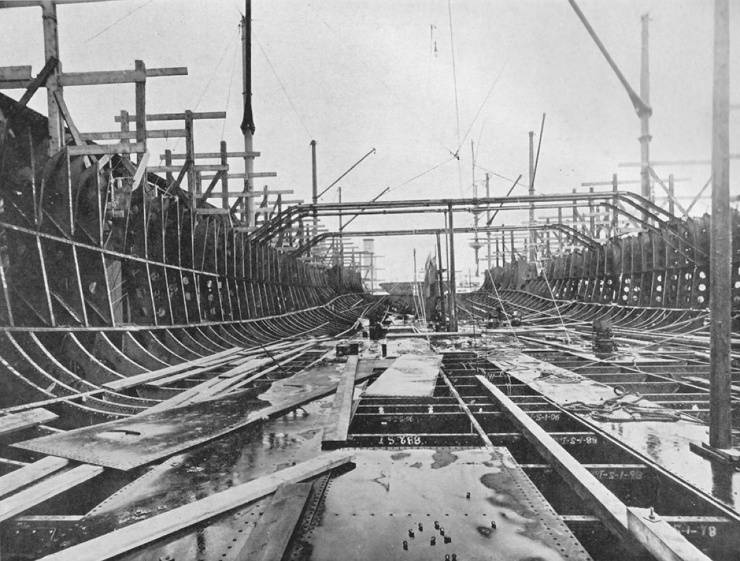
After the official bookmark date, the number of employees was brought to 3 thousand people.
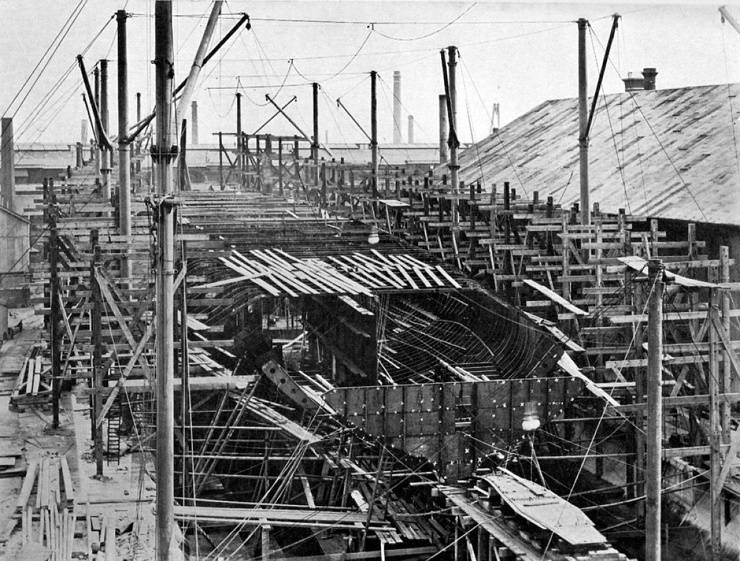
To simplify the procurement operations at the stage of preparing working drawings, the number of standard sizes of steel profiles was significantly reduced. The number of steel sheet thicknesses was also reduced to a minimum.
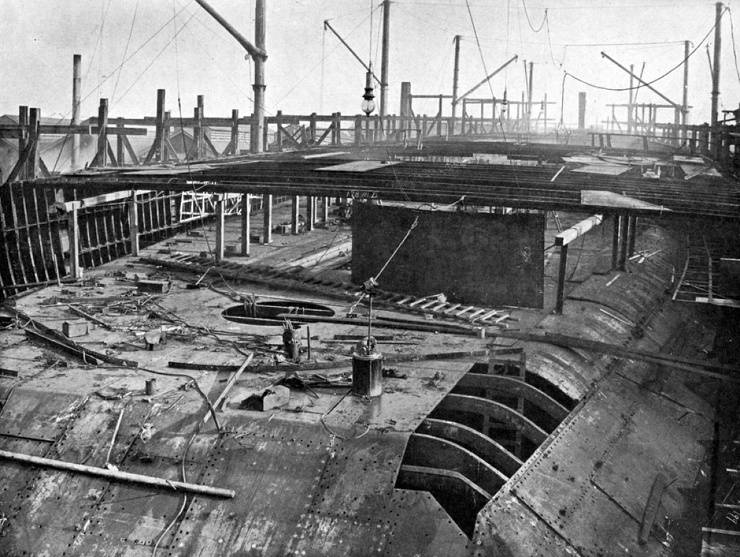
The measures taken turned out to be enough to set a record of the pace of construction of a large ship, not beaten to this day.
10 February 1906 of the Year The Dreadnought was launched. The ceremony was conducted by King Edward VII. And already 3 October 1906, the ship went into service. Thus, officially the period of its construction was one year and one day.
If you count from the date of laying the first sheet on the stocks, from May 1905 of the year to December 1906 of the year when the preparation of the Dreadnought for the Atlantic march was completed, you get 20 months. And if you count up to the date of commissioning as a combat unit, then all 23. But even this period is an outstanding result, given the number of fundamentally new solutions used on the ship.
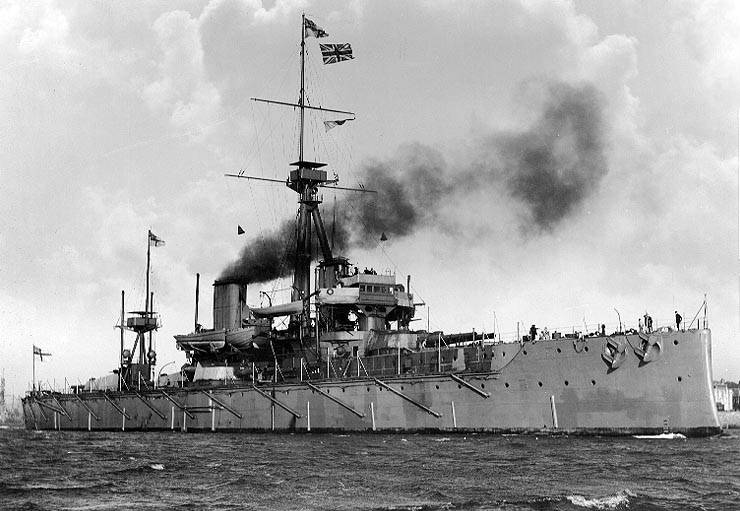
The construction of the Dreadnought has become a significant event in shipbuilding. After the appearance of the Dreadnought, all the leading naval powers of the world began to build battleships, which, like him, had the main armament of one-caliber guns. By the name of their ancestor, these ships received the nominal name "Dreadnoughts."
The maritime arms race before the First World War led to the emergence of "super-dreadnoughts" with weapons from 343-mm and 381-mm guns. Against them, the Dreadnought looked less powerful, so in Jutland battle, the largest in the First World War, the progenitor of the class was in the “second line” and did not take part in the fight.
The only fighting achievement of the Dreadnought was the successful ram of a German submarine. "U-29"commanded by al-submariner Otto Weddigen, at the beginning of the war in one day, sank three British armored cruisers: Abukir, who are "Cressy"and "Hog"...
This February 1910 day turned out to be particularly cold and windy in Portsmouth. Dreadnought Commander, Captain (rank in the British fleet; in the Russian fleet it corresponds to the rank of captain of the 1 rank) Sir Herbert Richmond, read into the telegram just delivered by the police officer from the radio room. The telegram reported that the ship would soon be granted a visit by the Abyssinian royal family. The fuss that had risen on the battleship did not give way to the description: it was necessary not to lose face and carefully prepare for the arrival of such distinguished guests. It was even involved His Majesty orchestra of the Navy. In his repertoire was the anthem of Zanzibar, and the ship's captenarmus had a zanzibar flag in the storeroom. In the absence of Abyssinian satisfied with these.
Guests of honor arrived. Four bearded dark-skinned people in luxurious oriental robes and turban boarded the battleship aboard the battleship. They were accompanied by a smart interpreter and a gloomy guard.
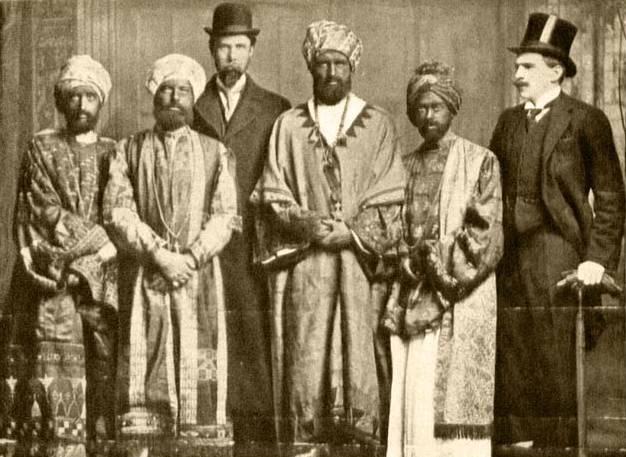
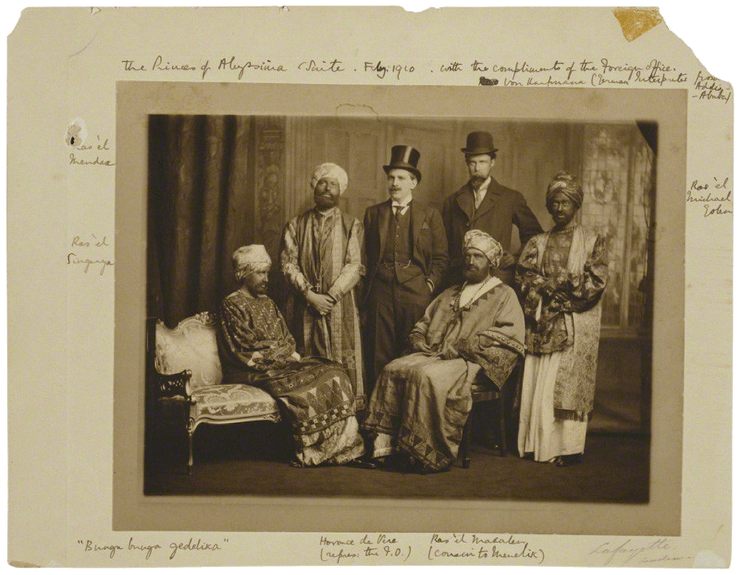
Sir Herbert Richmond personally conducted a tour of the battleship for the royal family listening to him. The guests nodded approvingly as they talked on their Abyssinian and admired what they had seen, exclaiming at times: “Bunga! Bunga! ”...
The distinguished guests refused lunch: the translator explained that the royal family does not have lunch with strangers. When the guests of honor finally left, the commander of the Dreadnought and his assistants breathed a sigh of relief. Looks like the visit was top notch.
A few days later, a telegram arrived from London stating that the Abyssinian delegation was not a delegation at all, but a bunch of jokers ...
Yes, prankers were not born today. Nothing that they then used not the telephone, as is customary today at the pranker, but the telegraph. We will not be too penny-wise, but let us pay tribute to the British aristocrat, the poet and the great lover of practical jokes who had masterfully spent all this disgrace William Horace de Vir Cole.
One of the "Abyssinians" was a woman, the beginning writer Virginia Stephen. It will take quite a bit of time and she will become a great writer - Virginia Woolf.
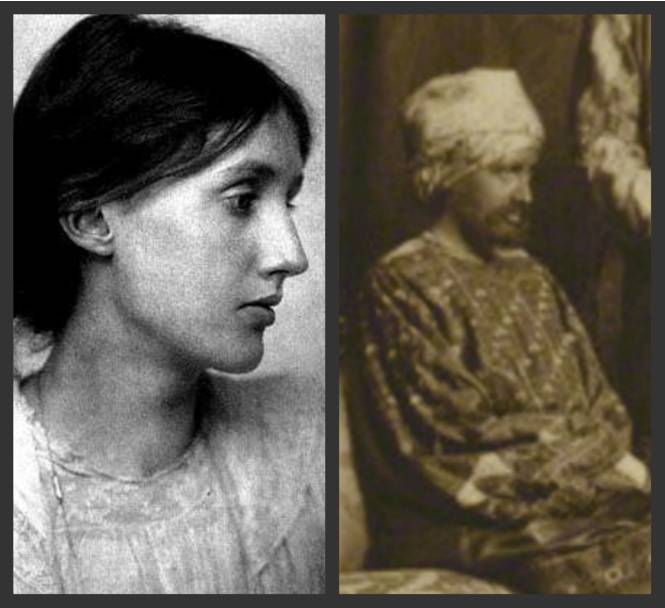
The Abyssinian language, spoken by the guests, was a simple mixture of Latin and abracadabra. To refuse a solemn dinner of jokers forced concern for the makeup: suddenly beards will come off!
On his return to London, the joker-aristocrat told the story of the newspaper raffle. Daily Mirror and sent there photos, after which the British Navy for many months turned into a mockery. Cole, in fact, in this saw the goal of the enterprise - to prove how easily you can, if you wish, penetrate important military installations. And that, for example, for German intelligence, it is not difficult.
The authorities tried to find an article in the law, according to which the joker and his friends could be judged, but, unfortunately, they did not formally violate the law. A visit to the Dreadnought was Cole's biggest draw. (He was followed by other sins: when he was a student Cambridge university he visited him in the form of the Sultan of Zanzibar; another time, with friends disguised as road workers, dug up Piccadilly - one of the widest and busiest streets in Westminster, the historical center of London. But on Dreadnought Cole surpassed himself.)
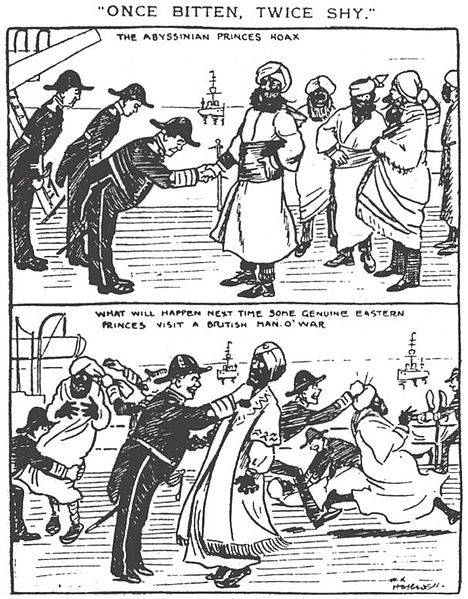
It is said that when a real emperor of Ethiopia visited Britain a couple of years later, he was denied a tour of the Dreadnought, and English children welcomed his motorcade with shouts of “Bunga! Bunga! ”...
For those interested: a bunch of photos from the time of construction of this battleship:
Very beautiful and quite detailed his 3D model:
Sources:
Wikipedia articles, Internet publishing.
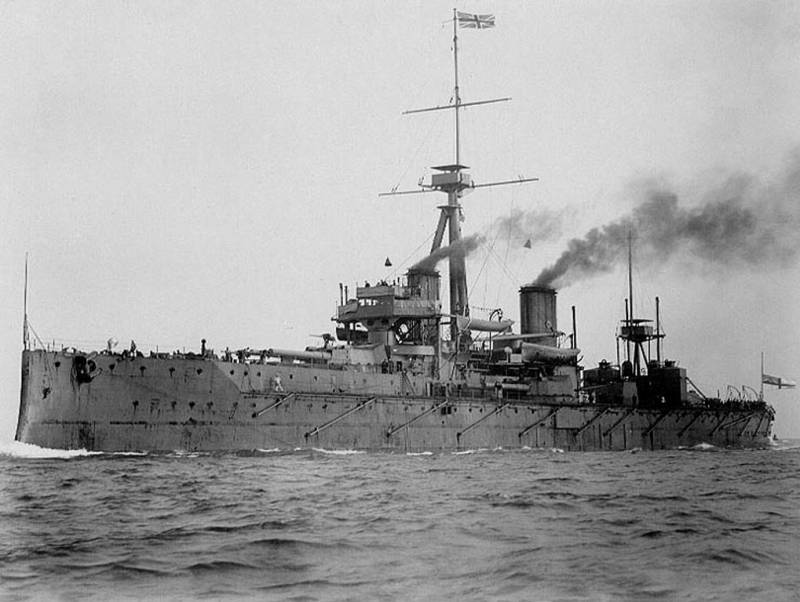
Information